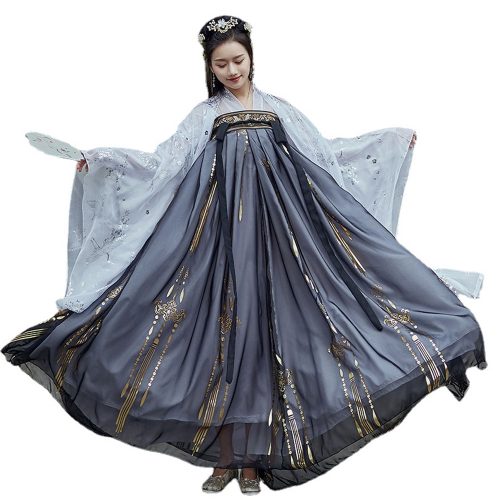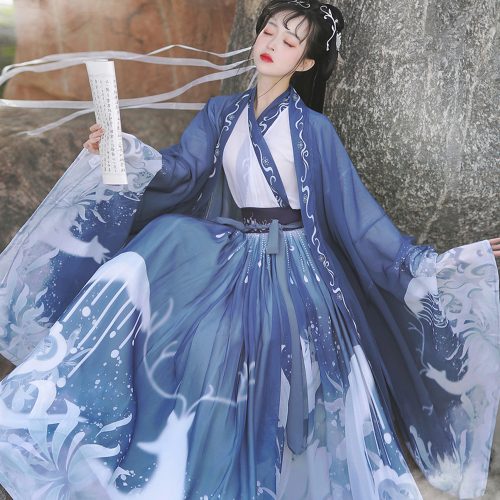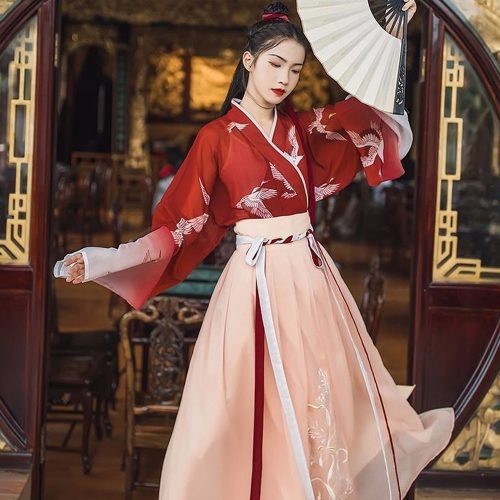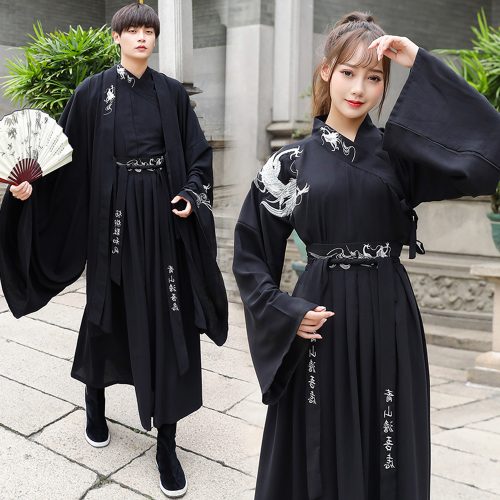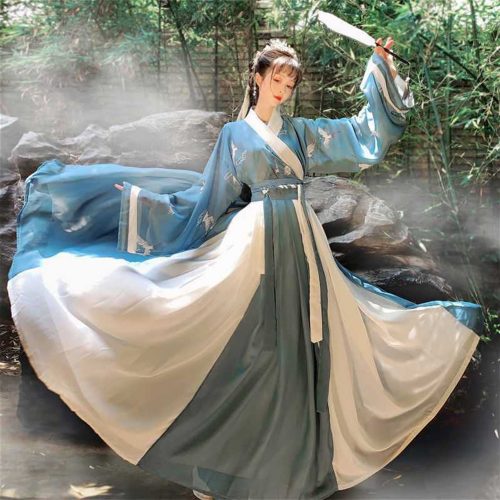BEST HANFU COLLECTION FOR YOU
With "Huaxia-Han" culture as the background, centering on Huaxia rules of etiquette, hanfu dress is formed through natural evolution with a unique Han style, obviously different from other ethnic groups' traditional clothing and accessory system.
Hanfu carries 5,000 years of civilization and represents China's rich culture and spirit.
Hanfu patterns and styles vary from dynasty to dynasty. Generally speaking, the following types are more popular.
Song Dynasty Hanfu clothing
Tang Dynasty Hanfu clothing
Han Dynasty Hanfu clothing
Qing Dynasty Hanfu clothing
Ming Dynasty Hanfu clothing
Some colors are also popular among people, including:
Red Hanfu clothing
Black Hanfu clothing
White Hanfu clothing
Blue Hanfu clothing
Green Hanfu clothing
Pink Hanfu clothing
With the development of modern hanfu dress, winter hanfu dress and short hanfu dress are also available now. Wedding hanfu dresses are also used commonly.
- The Best Brands
ZooBoo
LAI MENG FIVE CATS
MapofBeauty
CRB Fashion
HZCX FASHION
HangErFeng
First of all, Hanfu is not religious and does not infringe much on the integrity of Chinese culture. It was simply a costume worn by the Han Chinese who ruled China for centuries.
Second, cultural appreciation is a thing. If non-Chinese people wear it, they appreciate Chinese culture and seek to spread that beauty. If they don't like it, they won't wear it. It is essential to know that when non-Chinese wear hanfu dress, they do so not out of malice but appreciation and respect.
Modern hanfu dress is no longer confined to the Han nationality. It is a symbol of beauty and an external manifestation of the spirit of the national culture. Regardless of ethnic minorities or foreigners, all are welcome to join it.
The following links may be helpful for you.
https://www.wikihow.com/Wear-a-Traditional-Chinese-Dress
https://chinamarketadvisor.com/chinese-hanfu-history-how-to-wear/
https://shalihalfa.tumblr.com/post/44064960027/how-to-put-on-hanfu-han-chinese-clothing
https://www.tianyundesign.com/how-to-wear-hanfu
Boehmeria nivea (L.) Gaudich.
Natural silk
Brocade
Gauze
Cotton fabric
During the Xia Dynasty (2070-1600 B.C.), upper and lower garments were prevalent. Hanfu was basically formed during the Shang Dynasty (1600-1046 B.C.).
- Hanfu vs. Kimono
The kimono was a replica of the Tang costume in the early days. Although the kimono came from hanfu, it has developed its own national characteristics.
- Waistband:
Hanfu: narrow waistband
Kimono: no tie on the placket, wide waistband
- Neckline:
Hanfu: close to the back of the head
Kimono: The neckline wrapped around the women's neck.
- Hem:
Hanfu: wide hem, more relaxed
Kimono: narrow hem, limited activity
- Sleeve:
Hanfu: Wide sleeves come with soft lines. The length of the sleeve exceeds the arm's length.
Kimono: The sleeves are straight, and the lower part of the cuffs are sewn. The length comes to the wrist.
- Clothesline:
Hanfu: curves
Kimono: straight lines
- Hanfu vs. Hanbok
- Collar shape
Hanfu: Y-shaped collar, V-shaped collar
Hanbok. V-neck with bow tie at the collar.
- Design
Hanfu: The dress is attached to the upper outer garment.
Hanbok: The upper tunic covers the skirt. The hem of the skirt is wide.

